Images of cattle are among the first known representative artworks in history, beginning with the Lascaux Cave paintings near Montignac in France that include several painted images of wild aurochs – an ancient breed of cattle – and are estimated to be 17,000 years old. Images of working cattle are present in ancient Egyptian artworks such as paintings, pottery, relief sculpture, and other decorative wares; the beast of burden motif emphasized the importance of farming and livestock for the development of a non-nomadic civilization. Modern art, such as Dutch landscape and English commercial art have also utilized the image of the cow, but with focus shifted from the animal as utilitarian, to the animal as a representation of the peaceful, humble, and hard-working lifestyle otherwise known as bucolic, from the Greek for cowherd. Bucolic literature, music, and art are characterized by the pastoral and rural setting, conveying an idyllic impression of the simplicity in humans’ working relationship with the land, particularly by contrast to urban settings and the effects of industrialization. The image of the cow within the bucolic genre as an allegory of dignity and the traditional rural lifestyle was seen through a lens of gratitude for the livelihood afforded by these animals. The affection and esteem with which the works were created and received mark them as among the most popular sub-genres of landscape painting in Modern art.
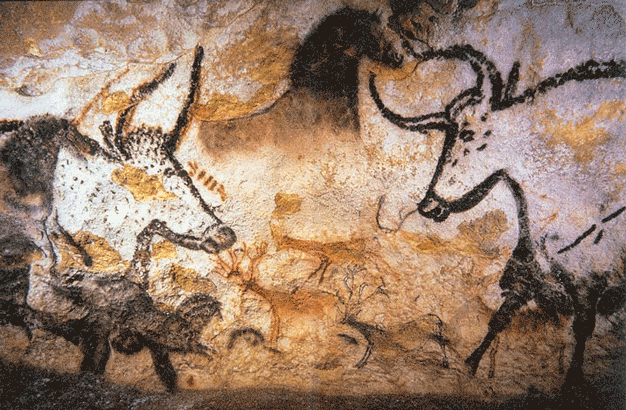

Symbols of Harmony
Steeped in tranquility and consonance, 17th-century Dutch paintings of cows were a beloved and nationalistic image in popular art. The presence of humans alongside the cattle indicated a harmonious relationship between humans and farming animals, a relationship many credited for the prosperity and effectiveness of the Dutch economy. In Paulus Potter’s (1625-1654) monumental and nearly life-sized painting The Young Bull (1647), the heroic treatment of the animals sets the work apart from earlier depictions of the cow as a lower life form. Here, the animals are arranged in proud postures, elevated slightly above the vantage point of the viewer, and looking directly outwards, matching the viewers’ gaze, representing sentience and parity. Common in Golden Age Dutch paintings, the single-wing composition in which a triangular form occupies a bottom quadrant of the painting features other livestock as well as a human caretaker, another indicator of the kinship between animals, humans, and land.
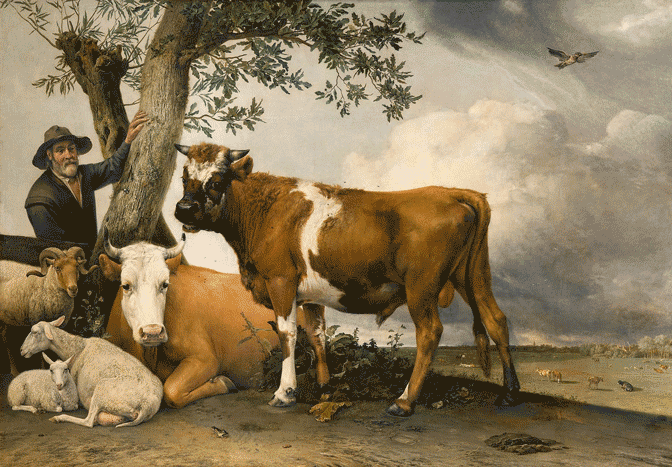
Perhaps most famous within the realm of Dutch painters of bucolic landscapes is Aelbert Cuyp (1620-1691), whose paintings River Landscape with Cows (1645-1650) and Young Herdsmen with Cows (1655-1660) are indicative of the sublime landscape, and of the possibilities provided through growth and prosperity. The hazy backdrops and expansive stretch of sky create a sense of the infinite, while the subjects, imbued with stillness, indicate the quiet virtues of labour and community-sustaining production. The subtle emphasis on production, as seen in the Golden Age of rural Dutch landscapes, was a source of pride for landowners and proprietors of the dairy industry. The subtlety of that emphasis, however, would broaden into a sensationalistic and crowd-pleasing emblem of British farming in the centuries to come.
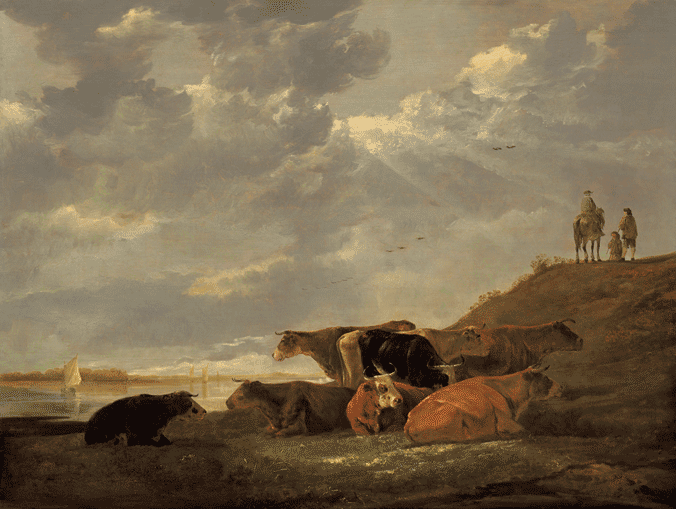
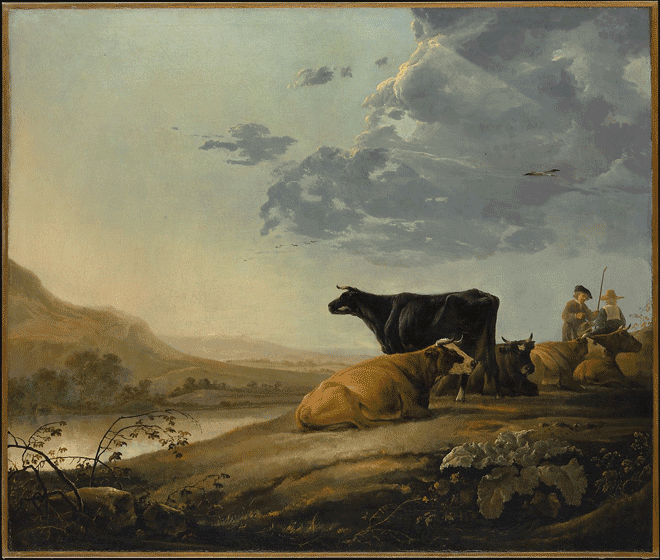
Symbols of Success
The Durham Ox, with its immense rectangular profile, disproportionately small head, and a weight of over three-thousand pounds distinguish the creature as one of the most famous animals in modern Western history. Born in 1796 in County Durham, England, the Durham Ox set the standard for Shorthorn cattle breeding after gaining fame in 1802 when he toured throughout England and Scotland and became the ambassador of the cattle breeding movement in the late 18th and early 19th centuries. Transported in a specially made carriage that required four horses to draw it, the Durham Ox was so admired by the public that when John Boultbee (1753-1812) painted the Ox’s image in 1802, more than two-thousand coloured prints were sold in the same year.
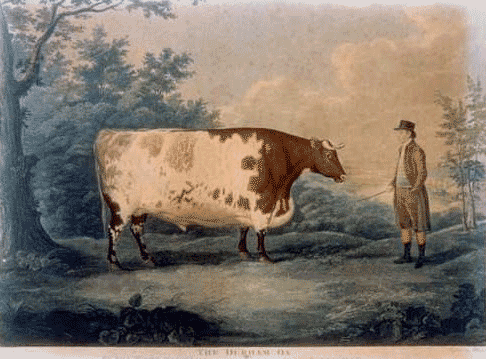
The prints included information boasting of the cow’s size and weight in a quasi-advertisement for the breed. The popularity of Boultbee’s work and his exaggerated structural illustration of the cow’s body, alongside the owner for scale, created a visual language of which commercial artists began to propagate. The nearly impossible right angles of the Durham Ox in Boultbee’s painting gave way to even more unnatural geometrical representation in subsequent paintings of livestock, such as the Craven Heifer (1807 and 1811) by an unknown artists, Shorthorn Bull (c. 1855) by Henry Stafford (1830-1873), and The Chillington Oxen prints (1838) by John Porter (active 1824-1842) after Lucas Beattie (active 1835-1838) .
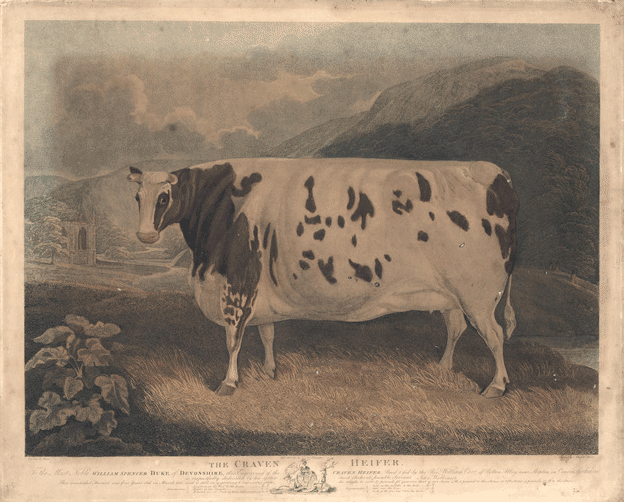
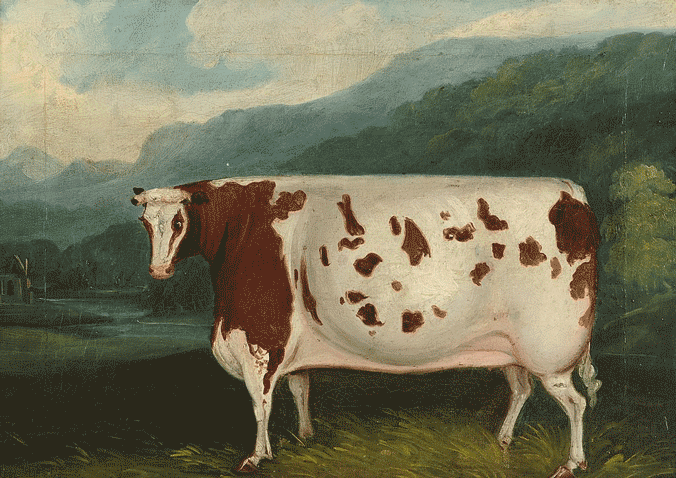
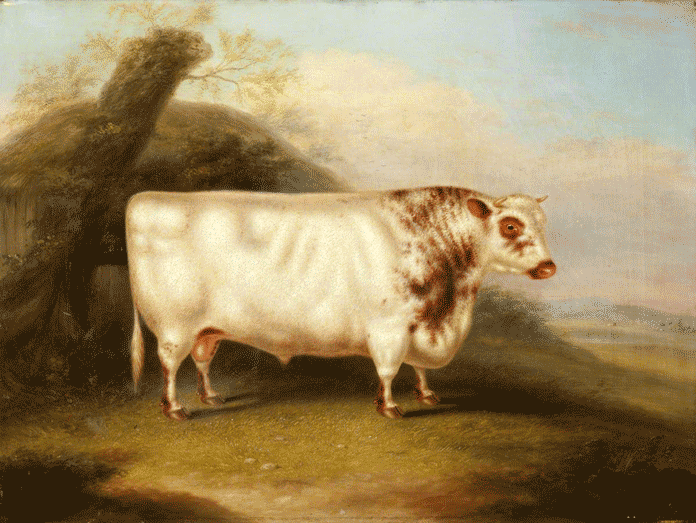
Symbols of Peasant Life
The long 19th century marked a rise in nostalgia for people living in urban settings, who amid great leaps in technological and industrial advancement, romanticized country living and a connectedness with the natural world. German Impressionist painter Heinrich von Zügel (1850-1941) painted dozens of pastoral cow images, often dappled with sunlight and featuring people at work with the animals. One of several compositional variants of a front facing pair or group of cows accompanied by a man, Farmer with Cows (1900) and Through the Forest (c. 1911) are reminiscent of the earlier Dutch paintings featuring the cows’ gaze. These paintings are notably different, however, for the interactive quality, as the viewer is no longer beholding the scene, but are brought into the action through a vantage point so near to the subjects as to create a virtual sense of closeness, as though one is taking part in the scene.
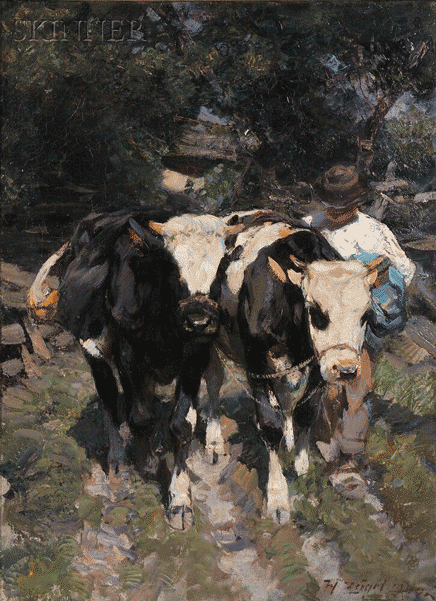
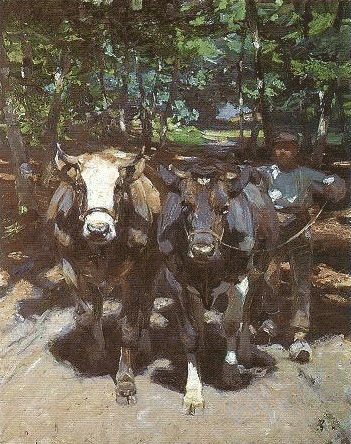
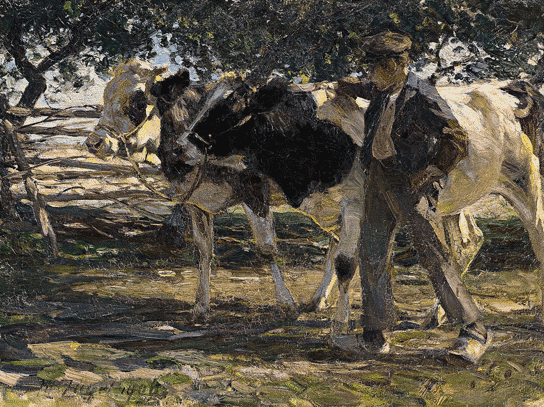
The vicarious participation in farm life, such as in Zügel’s Peasant with Cows (1906), can also be seen as what art historian Albert Boime (1933-2008) noted as a glorification of peasant life in response to the post-industrial malaise, in which cities and blue-collar factory work was considered to be the source of turmoil and disenchantment. Boime considered Realist painter Rosa Bonheur’s (1822-1899) renowned painting Ploughing in the Nivernais (1849) as a celebration of ancient traditions. Bonheur’s prolific work as a painter and sculptor, with a clear focus on animals, captured the attention and respect of both her peers and of the art-loving public, who considered her paintings to represent a commitment to the natural world within the context of the industrial revolution.
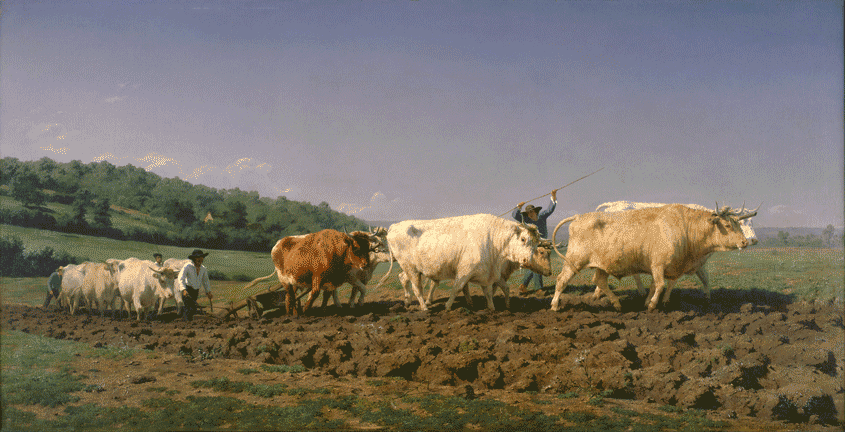
The genuine affection and masterful skill with which she painted animals, though sometimes criticized by her male contemporaries for being too realistic, won her world-wide acclaim, as well as the medal of Chevalier of the Legion d’Honneur in 1894 for her achievement in art, making Bonheur the first woman to win the award. Though fame and fortune were bestowed upon her early in her career, Bonheur continued to paint Realist images of working animals, particularly horses and cows, up until the year of her death. Of the most famous images of the artist, a portrait painted by Edouard Dubufe (1819-1883) depicts a noble vision of Bonheur, ever clad in black and staring into the distance with pen and papers in hand. A side table was originally featured in the composition, but Bonheur asked Dubufe if instead she herself could paint a bull by her side, large, stoic, and looking straight towards the viewer, a request to which Dubufe obliged.
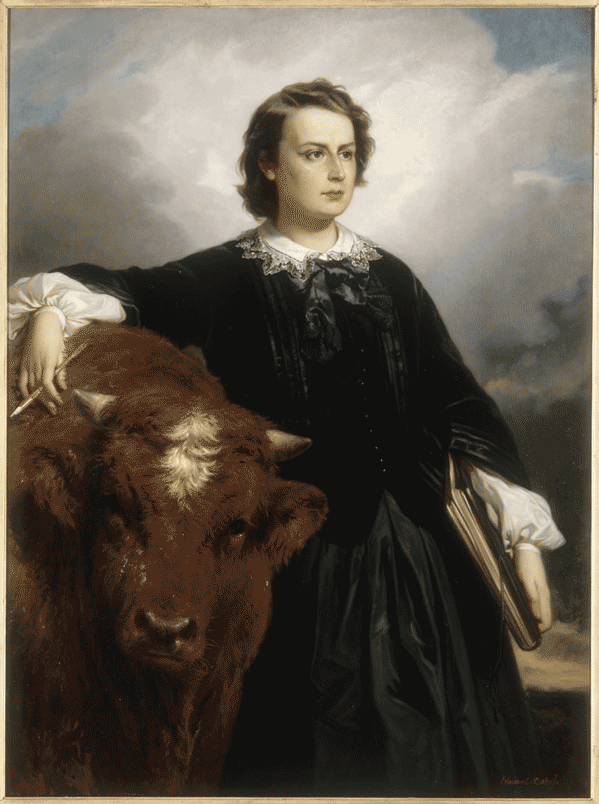
Throughout the history of livestock in painting reformed from a subservient worker to a cherished comrade, the image of the cow is deeply connected with human life and the evolution of society. Seeming at first to be mundane in subject matter, the profound link between humans and domestic or working animals dwells below the formal level of the art, often in the form of gratitude and romanticism, creating a sense of beauty in the commonplace.
